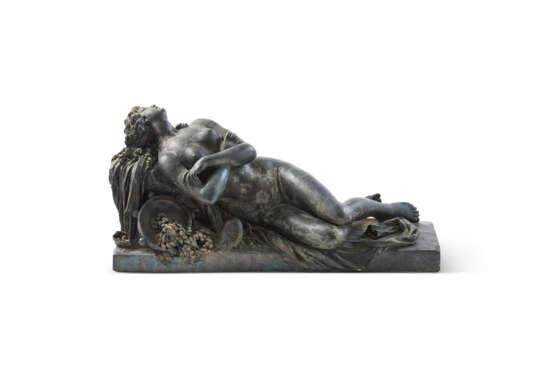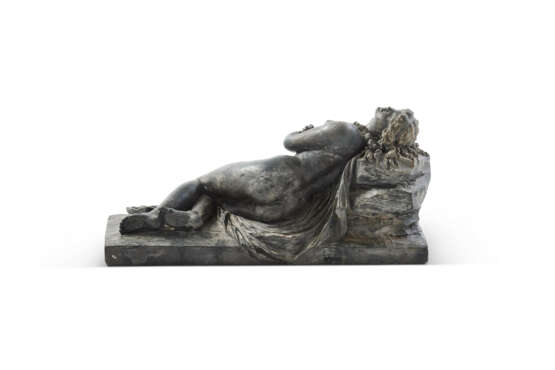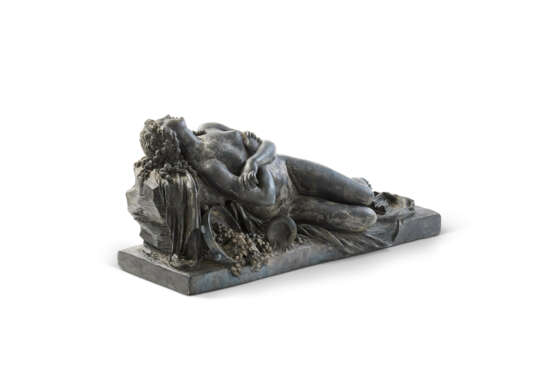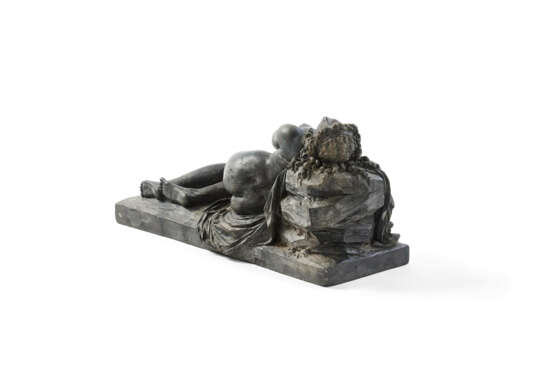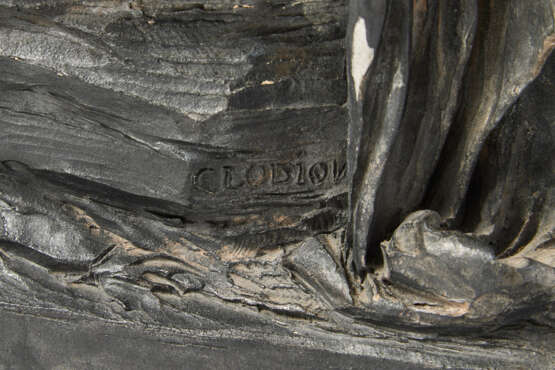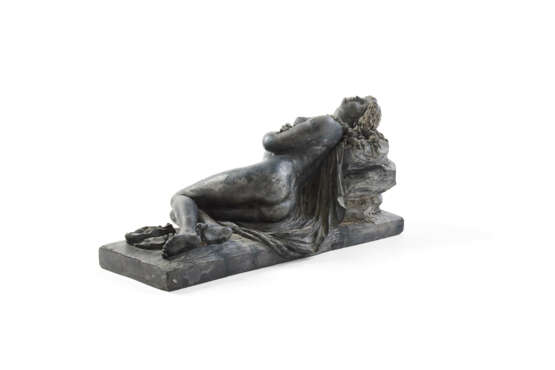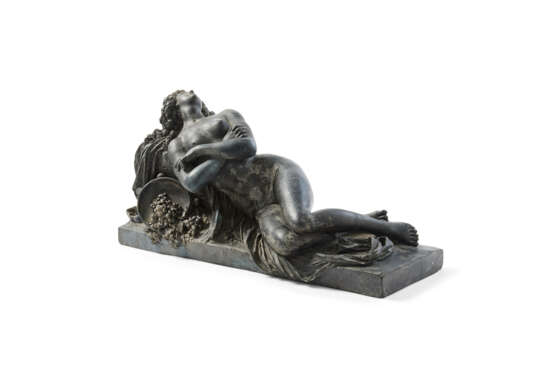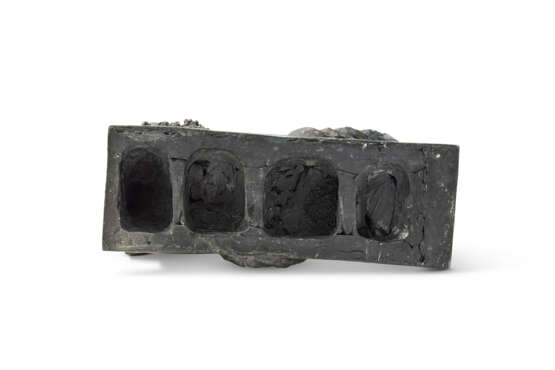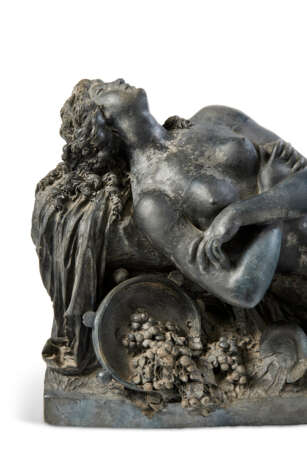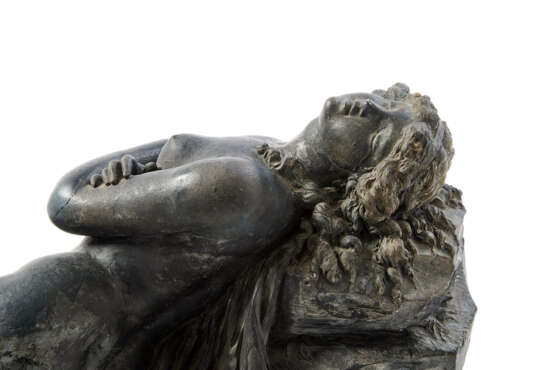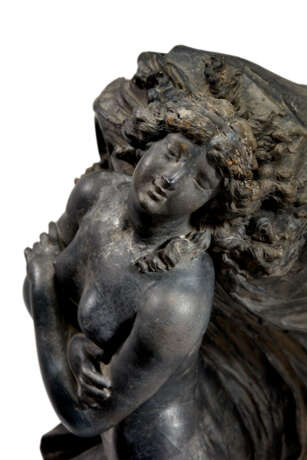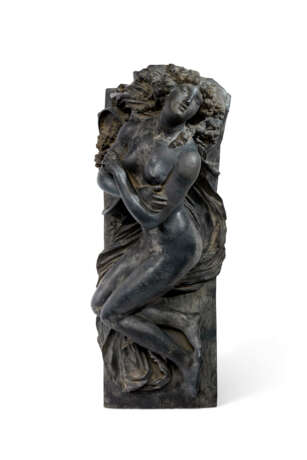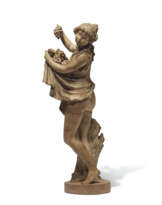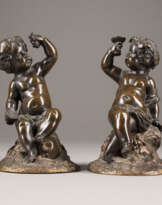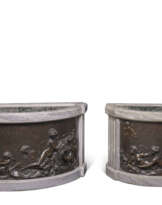ID 1172985
Lot 67 | NYMPHE ALLONGÉE
Estimate value
€ 10 000 – 15 000
CERCLE DE CLAUDE MICHEL DIT CLODION (1738-1814), FIN DU XVIIIe SIÈCLE
terre cuite patinée à l’imitation du bronze, portant la signature ‘CLODION’ à l‘arrière du rocher ; restaurations
H. 19 cm (7 ½ in.) ; L. 41,8 cm (16 1⁄3 in.)
Provenance
Collection privée belge.
Literature
Bibliographie comparative :
G. Scherf (dir.), Clodion (1738-1814), cat. exp., Paris, Musée du Louvre, 1992, pp. 248-251, cat. 51, pp. 401-404, cat. 93.
Further details
A BRONZE PATINATED TERRACOTTA FIGURE OF A RECLINING NYMPH, CIRCLE OF CLAUDE MICHEL CALLED CLODION (1738-1814), LATE 18TH CENTURY
Of the signatures on the autograph terracottas by Clodion, whose real name was Claude Michel (1738-1814), it is possible to distinguish three types (Scherf, op. cit., p. 461), including the one seen here, inscribed ‘CLODION’ in capital letters, with the letter ‘N’ inverted, affixed to the back of the rock. Although the inverted ‘N’ in the signature is commonly used by the sculptor but often overlooked by his imitators, the fact remains that Clodion is undoubtedly the most copied sculptor of the 18th century.
Claude Michel, known as Clodion, began his career in the traditional way. Around 1755, he arrived in Paris from his native city of Nancy to prepare for the Prix de Rome. He lived with his uncle, Lambert-Sigisbert Adam (1700-1753), a sculptor from Lorraine who had enjoyed great success in Rome. On the death of his uncle, Clodion enrolled as a pupil of Jean-Baptiste Pigalle until the end of the Prix de Rome competition, which he won on 1 September 1759. In December of the same year, he entered the École royale des élèves protégés, and in 1762 received his brevet for the Académie de France in Rome. In 1781 Clodion married the daughter of Augustin Pajou (1730-1809), Catherine Flore. Among his witnesses was the architect Alexandre-Théodore Brongniart (1739-1813), with whom he collaborated for several years, becoming especially renowned for his bas-relief, for example the Triumph of Galatea for the Hôtel Bouret de Vézelay. In 1778, Clodion received his first royal commission, a statue of Montesquieu (Musée du Louvre, inv. ENT 1987.02). He then went on to produce a large number of works with lighter subjects, intended for amateur cabinets. Most of these small-scale sculptures were in terracotta. Discreet during the Revolution, Clodion resumed his career in 1795.
Clodion’s bacchantes, one of his favourite subjects, are in a characteristic style of works intended for amateurs he produced in the 1780s. Stylistically, our reclining nymph is extremely close to Clodion’s work. A comparison with the Psyche from the group The Abduction of Psyche (1797-1800, Victoria and Albert Museum, London, inv. A. 23-1958) reveals similarities, particularly in the treatment of the hair, the face and the corners of the eyes.
Nonetheless, an attribution to Clodion must be suggested with caution. Indeed, several authors have written that Clodion’s brothers – Sigisbert-Martial (born 1727), Sigisbert-François (born 1728) and Pierre-Joseph (born 1737) – worked with him after his return from Rome in 1771, imitating his style and benefiting from his successes. Here, the position of the reclining body is reminiscent of the aesthetics of certain nymphs executed by Pierre-Joseph – such as the Sleeping Bacchante lying on her back (Musée du Louvre, inv. no. RF 2761) – which contributed to the recognition in ‘Pierre-Joseph Michel [of] an artist of merit gifted with a personal style rather than a slavish imitator’ (A. Poulet, ‘À la manière de Clodion’, in Scherf, op. cit., p. 404).
| Artist: | Claude Michel (Clodion, 1738 - 1814) |
|---|---|
| Applied technique: | Pottery |
| Medium: | Ceramic, Terracotta |
| Genre: | Mythological painting |
| Place of origin: | Western Europe, France, Europe |
| Auction house category: | All other types of objects, Sculptures, Statues & Figures, Statuettes |
| Artist: | Claude Michel (Clodion, 1738 - 1814) |
|---|---|
| Applied technique: | Pottery |
| Medium: | Ceramic, Terracotta |
| Genre: | Mythological painting |
| Place of origin: | Western Europe, France, Europe |
| Auction house category: | All other types of objects, Sculptures, Statues & Figures, Statuettes |
| Address of auction |
CHRISTIE'S 9 Avenue Matignon 75008 Paris France | ||||||||||||||
|---|---|---|---|---|---|---|---|---|---|---|---|---|---|---|---|
| Preview |
| ||||||||||||||
| Phone | +33 (0)1 40 76 85 85 | ||||||||||||||
| Fax | +33 (0)1 40 76 85 86 | ||||||||||||||
| Conditions of purchase | Conditions of purchase | ||||||||||||||
| Shipping |
Postal service Courier service pickup by yourself | ||||||||||||||
| Payment methods |
Wire Transfer | ||||||||||||||
| Business hours | Business hours
|
